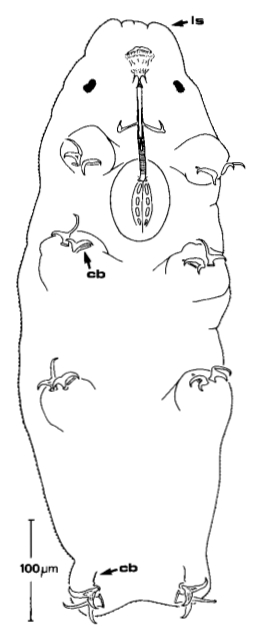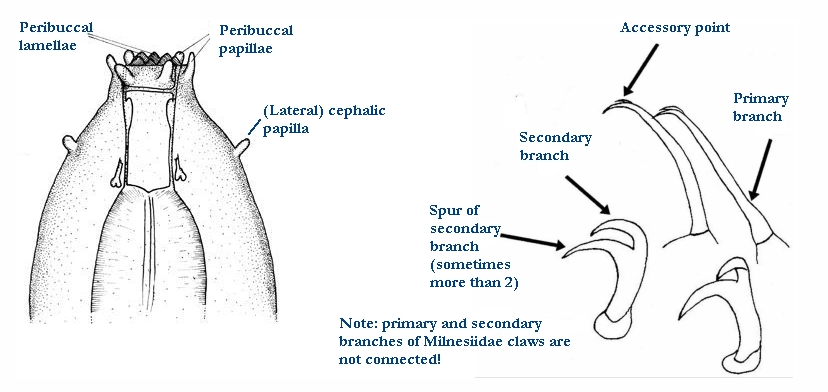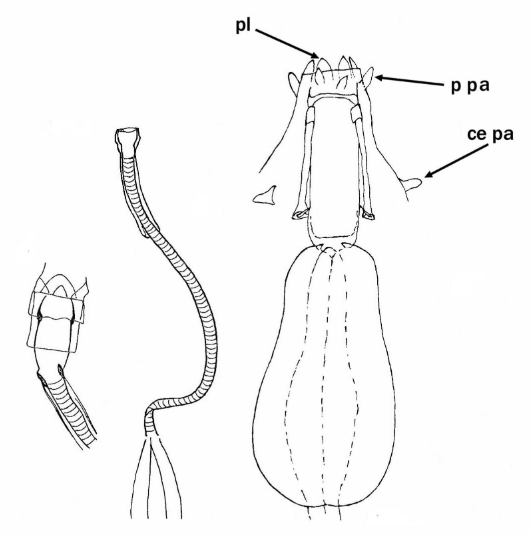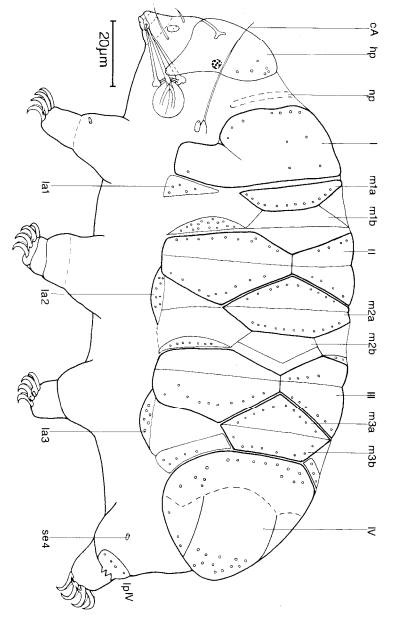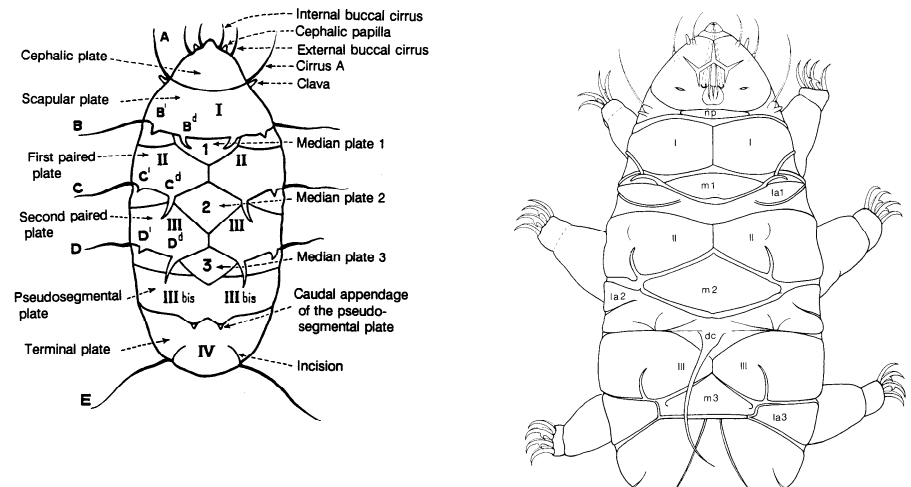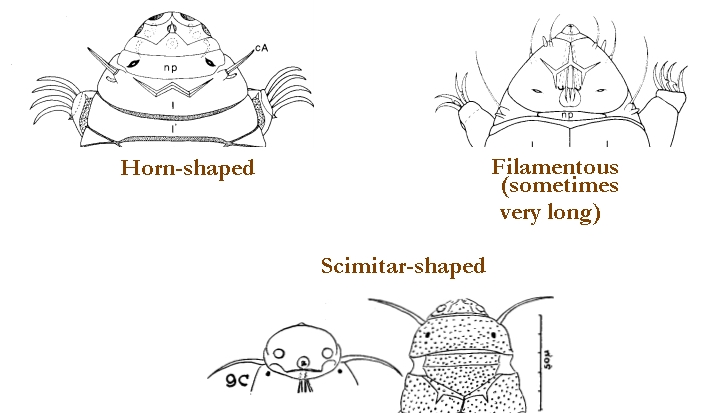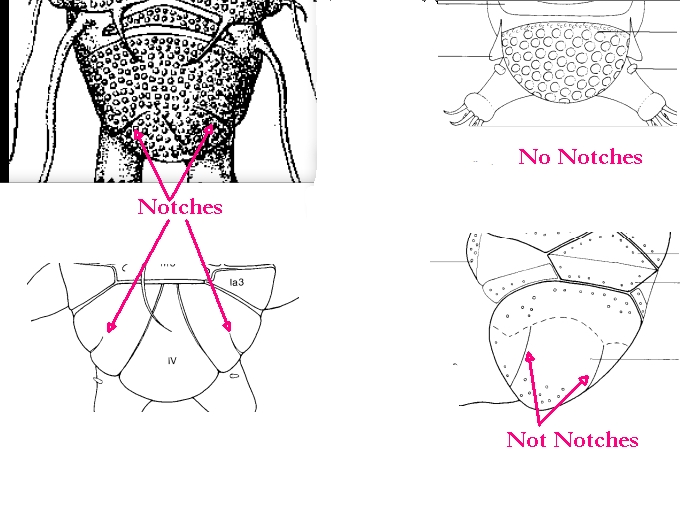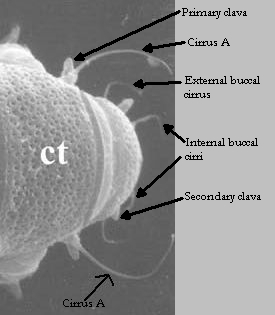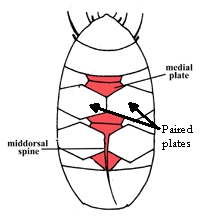Isohypsibioidea from Marley et al. 2011: “Parachela. Claws asymmetrical (2121); Isohypsibius-type claw pairs; AISM ridged.”
Isohypsibioidea from Bertolani et al. 2014: “Double claws asymmetrical with respect to the median plane of the leg (2121), normally with similar shape and size on each leg; double claws of the Isohypsibius type (secondary branch of the external claw inserted perpendicularly on the claw basal tract), or reduced from it: Hexapodibius type (very short, without common basal tract, with a base as large as the sum of the primary and secondary branch widths, and with an evident suture between primary and secondary branch); Haplomacrobiotus type (one branch only); completely absent (Apodibius). Buccal tube completely rigid (apart Paradiphascon; see below) and often relatively large, without (Dastychius, Eremobiotus, Halobiotus, Isohypsibius, Paradiphascon, Pseudobiotus, Thulinius) or with (Apodibius, Doryphoribius, Haplomacrobiotus, Haplohexapodibius, Hexapodibius, Parhexapodibius) ventral lamina. Eggs with smooth shell laid within the exuvium.”
Isohypsibiidae from Marley et al. 2011: “Isohypsibioidea. Claw pairs of similar size and shape. External and internal claws exhibiting articulation (the basal section and secondary branch form a solid unit while the primary branch and secondary branch articulate). Claws Isohypsibius-type, forming a right-angle between basal section and secondary branch. AISM ridge-like.”
Genus description from Dastych 1992: “Semiterrestrial eutardigrades belonging to the family Hypsibiidae Pilato, 1969. Head segment provided with three flat lobes in its frontal (“facial”) part, i.e. a median and two lateral. Upper parts of lateral lobes shaped like a pair of roundish and flattened dome-tipped structures. Mouth opening surrounded by a flat ring of wrinkled cuticle, instead of the usual six peribuccal lobes. Buccopharyngeal apparatus of Diphascon-type, with a ring of lamella-like structures around upper edge of mouth cavity. Mouth tube without strengthening bar and terminated in its posterior part with a strikingly large and striated posteriodorsal apodeme (= ‘drop-like’ structure: Pilato, 1987a). Pharygeal tube relatively wide, conspicuously short and annulated. Claw system of Hypsibius-type, with formula “2121”. The smooth and ovoid eggs are deposited into the [shedded] cuticle.”
Genus additional notes from Pilato & Binda 1996: “…both the dorsal and the ventral apophyses for the insertion of the stylet muscles can be defined in shape of ‘triangular ridge’ rather than ‘hook shaped’… those ‘lamella-like structures’ seem peribuccal papulae rather than lamellae… the claws of Paradiphascon can be considered of Isohypsibius type rather than of Hypsibius type.
Like in other cases, the resemblance with the claws of Hypsibius type can be noted in the internal claws where, being large the portion between the basal portion and the secondary branch, it is not very evident that the angle between the former and the latter is a right angle. but if we consider the axis of the basal portion and the axis of the secondary branch, one can note between them an angle of approximately 90° rather than a continuous curve.”
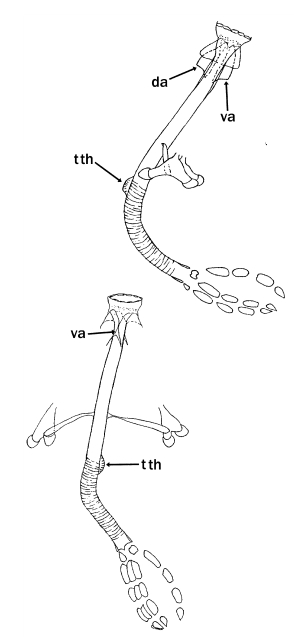

Citations:
Bertolani R, Guidetti R, Marchioro T, Altiero T, Rebecchi L, Cesari M. 2014. Phyloeny of Eutardigrada: New molecular data and their morphological support lead to the identification of new evolutionary lineages. Molecular Phylogenetics and Evolution. 76: 110-126.
Dastych H. 1992. Paradiphascon manningi gen. n. sp. n., a new water-bear from South Africa, with the erecting of a new subfamily Diphasconinae (Tardigrada). Mitteilungen aus den Hamburgischen Zoologischen Museum und Institut. 89: 125-139.
Marley NJ, McInnes SJ, Sands CJ. 2011. Phylum Tardigrada: A re-evaluation of the Parachela. Zootaxa. 2819: 51-64.
Pilato G, Binda MG. 1996. Additional remarks to the description of some genera of eutardigrades. Bollettino delle Sedute della Accademia Gioenia di Scienze Naturali in Catania. 29 (351): 33-40.
